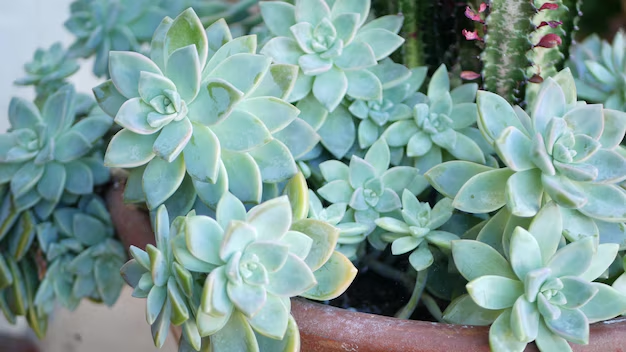USA Hardiness Zones Explained: Find the Right Plants for Your Region
A complete beginner-friendly guide to understanding USDA hardiness zones — and choosing the right plants for your climate.

If you have ever visited a nursery, bought seeds online, or tried growing plants for the first time, chances are you’ve seen terms like “Suitable for Zone 6–9” or “Hardy in Zone 4.” These terms refer to the USDA Hardiness Zones, a climate classification system used across the United States to determine what plants can grow where. Understanding these zones is the first step toward becoming a successful gardener — whether you’re growing vegetables, flowers, fruits, or indoor-friendly plants.
Many beginner gardeners fail because they choose plants that simply cannot survive in their climate. For example, someone living in Minnesota (Zone 3) may struggle to grow heat-loving plants like hibiscus, while residents of Florida (Zone 10) won’t have success with cold-loving crops such as brussels sprouts. That’s why knowing your zone is extremely important — it saves time, money, and ensures your garden thrives. If you're planning to build a beginner-friendly garden, explore our complete guide: How to Start a Backyard Garden.
What are USDA Hardiness Zones?
The USDA Plant Hardiness Zone Map divides the United States into 13 zones, based on the average yearly minimum winter temperature. These zones range from the coldest regions in the north (Zone 1) to the warmest, tropical areas in the south (Zone 13). Each zone is further divided into “a” and “b” sections, which provide even more precise climate information.
A plant’s “hardiness” simply measures how well it can survive winter temperatures. This means that if a plant is labeled as “hardy in Zone 5,” it can survive temperatures as low as -20°F to -10°F. If your region gets colder than that, the plant may freeze and die during winter.

Why Hardiness Zones Matter
While sunlight, soil type, and watering habits are all important, the biggest factor that determines whether your plants survive the winter is your climate zone. Hardiness zones allow gardeners to choose plants that are naturally suited to their region, reducing the need for extra maintenance or costly plant replacements.
For example, if you live in Texas or Arizona (Zones 8–10), you’ll have great success with heat-loving vegetables like tomatoes, peppers, and okra. On the other hand, gardeners in northern states like Wisconsin or North Dakota (Zones 3–4) should focus on cold-tolerant crops such as kale, carrots, garlic, and spinach. Beginners who want easy-growing, stress-free vegetables can check our detailed list: Best Vegetables to Grow in the USA for Beginners.
Zone Breakdown: Which Plants Grow Best Where?
Let’s take a closer look at what each zone generally supports. Keep in mind that microclimates — such as shaded yards, windy areas, or urban environments — can modify your zone slightly.
Zones 1–3 (Coldest Regions)
Found in states like Alaska, Montana, and North Dakota, these zones experience extremely cold winters. Only the toughest plants survive here. Cold-hardy vegetables such as potatoes, carrots, lettuce, peas, and cabbage grow well. Perennials must be hardy enough to survive deep freezes. Container gardening and raised beds help beginners manage soil temperatures more easily.
Zones 4–6 (Cool to Temperate Climates)
The majority of the Midwest and northern East Coast fall within these zones. Gardeners here can grow a large variety of vegetables — tomatoes, cucumbers, beans, carrots, leafy greens, herbs, and more. Most fruit trees (apple, pear, cherry) also thrive in these regions.
Zones 7–9 (Warm Temperate to Hot Climates)
These zones include states like Tennessee, Georgia, Oklahoma, Texas, and parts of California. Gardeners enjoy long growing seasons and warm weather, making it perfect for tomatoes, peppers, squash, cucumbers, sweet potatoes, and melons. Many subtropical plants also perform well here. People with busy lifestyles can also grow extremely low-work plants — see our list of Low-Maintenance Plants.
Zones 10–13 (Tropical & Subtropical Climate)
Southern Florida, Hawaii, and parts of Puerto Rico fall under these warmest zones. Tropical fruits such as bananas, mangoes, papayas, and citrus fruits grow exceptionally well. Winters are mild or nonexistent, allowing year-round gardening. However, heat stress and humidity can affect some plants, requiring careful watering.
How to Find Your Hardiness Zone
The easiest way to find your zone is by using the USDA Hardiness Zone Map online. Simply enter your ZIP code, and the tool will automatically show your exact zone. Nurseries and seed companies often include zone information on labels, which helps you pick the best-suited plants instantly.
Hardiness Zones and Indoor Plants
While indoor plants are not directly affected by outdoor climate, zone information still helps understand what temperatures they can tolerate. Beginners looking to decorate their homes with easy indoor plants should explore: Best Indoor Plants in the USA.

Hardiness Zones and Organic Gardening
When practicing organic gardening, choosing climate-appropriate plants reduces pest pressure, watering frequency, and fertilizer usage. Plants that thrive naturally in your environment require fewer resources, making organic gardening more successful and sustainable. Learn the basics of natural soil care and pest control in: Organic Gardening Tips for Beginners.
Final Thoughts: Your Hardiness Zone = Your Gardening Success
Understanding your USDA Hardiness Zone is one of the most important steps in creating a thriving garden. Whether you’re planning a vegetable garden, growing ornamental flowers, or trying tropical plants, your climate zone determines what will flourish effortlessly and what will struggle.
Once you know your zone, the possibilities become endless. You can pick the right plants, organize your growing schedule, and enjoy a healthier, more productive garden — no matter where you live in the USA.